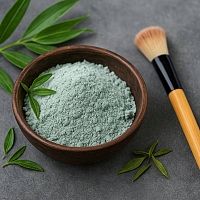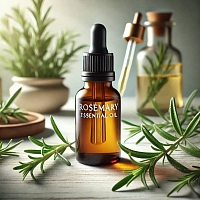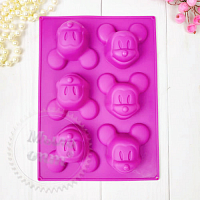-
 DIY: Video master classes
DIY: Video master classes
-
 Aromatherapy
Aromatherapy
-
 Felting master classes
Felting master classes
-
 Eating at home
Eating at home
-
 DIY cosmetics for children
DIY cosmetics for children
-
 Cooking recipes
Cooking recipes
-
 Detergents, cleaning products with your own hands
Detergents, cleaning products with your own hands
-
 Soap making as a business
Soap making as a business
-
 Natural cosmetics. Raw materials for cosmetics and soap.
Natural cosmetics. Raw materials for cosmetics and soap.
-
 Natural oils in cosmetics
Natural oils in cosmetics
-
 News
News
-
 Recipes for balms and conditioners
Recipes for balms and conditioners
-
 Bath Bomb Recipes
Bath Bomb Recipes
-
 Cream recipes. Cream making.
Cream recipes. Cream making.
-
 Lotion recipes. Gel recipes.
Lotion recipes. Gel recipes.
-
 Mask recipes
Mask recipes
-
 Soap recipes. Base soap. Soap from scratch.
Soap recipes. Base soap. Soap from scratch.
-
 Recipes for all occasions
Recipes for all occasions
-
 Natural shampoo recipes
Natural shampoo recipes
-
 Healthy Nutrition Recipes
Healthy Nutrition Recipes
-
 Scrub recipes. Massage tiles. Ubtan
Scrub recipes. Massage tiles. Ubtan
-
 DIY candles
DIY candles
-
 Reference materials, questions, tips
Reference materials, questions, tips
-
 Startup - soap production
Startup - soap production
-
 Hair care. Tips, recipes
Hair care. Tips, recipes
-
 Facial skin care. Cleansers.
Facial skin care. Cleansers.
-
 Body care. Tips, recipes
Body care. Tips, recipes
-
 Photo Reviews
Photo Reviews
-
 Chocolate Handmade
Chocolate Handmade
Causes of dandruff and effective care with natural ingredients
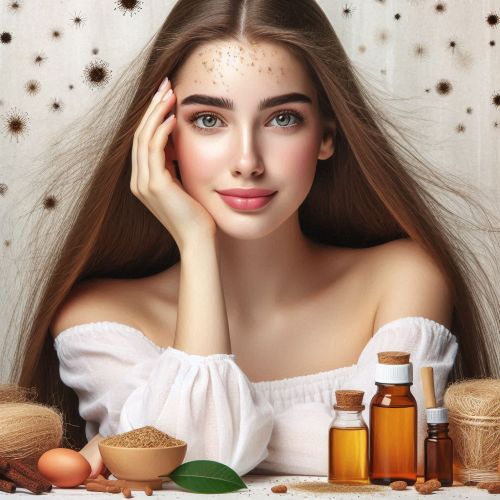 Dandruff, those pesky white flakes that cling to our hair and shoulders, is a common scalp condition that can be both embarrassing and uncomfortable. While many reach for commercial shampoos promising instant relief, a deeper understanding of its causes and the power of natural components can offer a more sustainable and effective solution. This article delves into the root causes of dandruff, explores the benefits of natural ingredients, and provides three detailed recipes for homemade dandruff treatments.
Dandruff, those pesky white flakes that cling to our hair and shoulders, is a common scalp condition that can be both embarrassing and uncomfortable. While many reach for commercial shampoos promising instant relief, a deeper understanding of its causes and the power of natural components can offer a more sustainable and effective solution. This article delves into the root causes of dandruff, explores the benefits of natural ingredients, and provides three detailed recipes for homemade dandruff treatments.
Understanding the Culprits: What Causes Dandruff?
Dandruff, medically known as seborrheic dermatitis, is characterized by excessive shedding of dead skin cells from the scalp. Several factors can contribute to its development:
- Malassezia Globosa: This yeast-like fungus thrives on the scalp of most adults. However, in some individuals, it can trigger an inflammatory response, leading to increased skin cell turnover and dandruff.
- Dry Scalp: Cold weather, harsh shampoos, and underlying skin conditions can dry out the scalp, causing it to flake.
- Sebum Overproduction: Excess sebum, the natural oil produced by the scalp, can create an environment conducive to Malassezia growth.
- Sensitivity to Hair Products: Certain hair care products containing harsh chemicals can irritate the scalp and exacerbate dandruff.
- Underlying Skin Conditions: Conditions like eczema, psoriasis, and contact dermatitis can manifest as dandruff-like symptoms.
- Poor Diet and Stress: While not direct causes, a diet lacking essential nutrients and chronic stress can weaken the immune system and make the scalp more susceptible to dandruff.
Why Choose Natural Components?
Industrial dandruff shampoos often rely on harsh chemicals like sulfates and zinc pyrithione, which can strip the scalp of its natural oils and lead to further irritation. Natural components, on the other hand, offer a gentler and more holistic approach:
- Gentle on the Scalp: Natural ingredients are less likely to irritate sensitive scalps.
- Nourishing and Moisturizing: Many natural ingredients provide essential nutrients and hydration to the scalp.
- Antifungal and Antibacterial Properties: Several natural components possess properties that can combat Malassezia and other microbial causes of dandruff.
- Sustainable and Eco-Friendly: Using natural ingredients reduces our reliance on synthetic chemicals and promotes a more sustainable lifestyle.
- Cost-Effective: Homemade remedies can be significantly cheaper than commercial products.
Three Powerful Natural Dandruff Treatments:
1. Apple Cider Vinegar and Tea Tree Oil Scalp Tonic:
- Properties: Apple cider vinegar (ACV) balances the scalp's pH, while tea tree oil possesses potent antifungal properties.
- Ingredients:
- 2 tablespoons apple cider vinegar (organic, unfiltered)
- 1 cup distilled water
- 5-7 drops tea tree essential oil
- Preparation:
- Combine the apple cider vinegar and distilled water in a clean spray bottle.
- Add the tea tree essential oil and shake well.
- Application:
- After shampooing, spray the tonic onto your scalp.
- Massage gently for a few minutes.
- Leave it on for 5-10 minutes, then rinse thoroughly.
- Storage: Store in a cool, dark place for up to two weeks.
2. Coconut Oil and Lemon Juice Hair Mask:
- Properties: Coconut oil moisturizes the scalp and has antifungal properties, while lemon juice helps to exfoliate dead skin cells and balance pH.
- Ingredients:
- 2 tablespoons coconut oil (organic, virgin)
- 1 tablespoon fresh lemon juice
- Preparation:
- Melt the coconut oil in a double boiler or microwave.
- Mix in the lemon juice thoroughly.
- Application:
- Apply the mask to your scalp and massage gently.
- Leave it on for 30 minutes to an hour.
- Shampoo and condition as usual.
- Storage: This mask is best used immediately.
3. Aloe Vera and Honey Scalp Soothing Gel:
- Properties: Aloe vera soothes irritated scalps and reduces inflammation, while honey has moisturizing and antibacterial properties.
- Ingredients:
- 2 tablespoons fresh aloe vera gel
- 1 tablespoon raw honey
- Preparation:
- Extract the gel from a fresh aloe vera leaf, or use pure aloe vera gel.
- Mix the aloe vera gel and honey thoroughly.
- Application:
- Apply the gel to your scalp and massage gently.
- Leave it on for 20-30 minutes.
- Rinse thoroughly.
- Storage: Store in an airtight container in the refrigerator for up to one week.
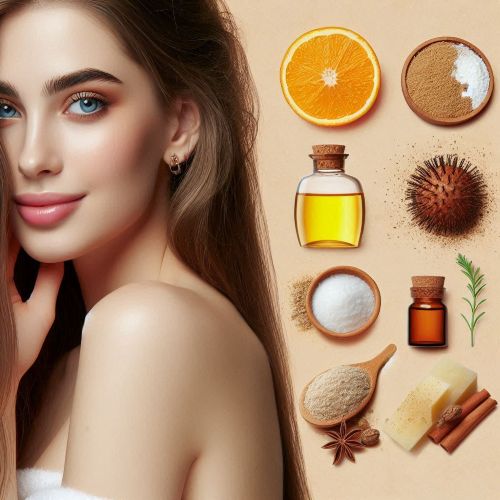 Recommendations for Use and Storage:
Recommendations for Use and Storage:
- Patch Test: Before using any new ingredient, perform a patch test on a small area of skin to check for allergies.
- Consistency is Key: Natural remedies may take time to show results. Use them consistently for optimal benefits.
- Diet and Lifestyle: A balanced diet, adequate hydration, and stress management can support scalp health.
- Storage: Store homemade remedies in clean, airtight containers in a cool, dark place or refrigerator, as indicated.
- Hygiene: Wash hair brushes and pillowcases frequently to prevent the spread of dandruff-causing organisms.
- Consult a Dermatologist: If dandruff persists or worsens, consult a dermatologist to rule out underlying medical conditions.
By understanding the causes of dandruff and embracing the power of natural components, you can achieve a healthy, flake-free scalp and restore your confidence.
Mylo Opt Cosmetics Blog – Your Reliable Guide to Beauty and Care
Welcome to the Mylo Opt cosmetics blog! Here, you will find valuable advice, interesting recipes, and professional recommendations for creating soap, cosmetics, and candles with your own hands. Our blog is designed for anyone passionate about natural cosmetics, looking for new ideas, and wanting to learn more about producing high-quality skincare and haircare products. We share tested recipes, useful tips, and the latest news from the world of cosmetics.
Why Choose the Mylo Opt Cosmetics Blog?
Mylo Opt is not just an online store; it is a community of people passionate about creating natural cosmetics. Here are a few reasons why our blog will be useful to you:
- Experience and Expertise: Our authors are experienced cosmetologists, soap makers, and aromatherapy specialists. We share reliable and tested recipes that have undergone thorough testing and received positive feedback.
- Credibility and Authority: We ensure that all information in our blog is up-to-date and reliable. We reference scientific research and verified sources so that you can trust the quality of the information provided.
- Reader-Focused: Our content is tailored to you – our readers. We strive to answer your questions, solve your problems, and inspire new achievements in the world of natural cosmetics.
Popular Products from the Mylo Opt Online Store
Before we move on to recipes and tips, let us introduce you to the most popular products from our online store, which will help you create high-quality and natural cosmetics:
- Soap Bases: High-quality soap bases allow you to create beautiful and beneficial handmade soaps. We offer glycerin bases, bases with added oils and extracts, as well as transparent and white bases.
- Fragrance Oils and Fragrances: Give your products a unique scent with our fragrance oils and fragrances. We offer a wide range of scents – from fresh and floral to spicy and woody.
- Essential Oils: Essential oils are natural components that not only add fragrance to products but also offer beneficial properties for the skin and hair. Our range includes lavender, mint, eucalyptus, lemon, and many other oils.
- Active Ingredients: Vitamins, antioxidants, hyaluronic acid, and other active ingredients help improve the properties of your cosmetics. We offer only tested and high-quality components.
- Pigments and Dyes: Give your products bright and lasting colors with our pigments and dyes. They are safe for the skin and suitable for use in soap, cosmetics, and candles.
- Emulsifiers and Thickeners: To create creams and lotions, you will need emulsifiers and thickeners. We offer quality ingredients that help you achieve the desired consistency and stability of the product.
- Soap and Candle Molds: Create unique items with our soap and candle molds. Our range includes molds of various sizes and designs.
- Everything for Candles: Wax, wicks, fragrances, and dyes for candles – we have everything you need to create beautiful and fragrant candles.
Recipes and Tips for Making Handmade Soap
Cold Process Soap for Beginners
Making cold process soap is an exciting process that allows you to control all the ingredients and create unique recipes. Here is one simple cold process soap recipe for beginners:
Ingredients:
- 500 g olive oil
- 300 g coconut oil
- 200 g palm oil
- 150 g castor oil
- 120 g lye (sodium hydroxide)
- 300 ml distilled water
- Essential oils (lavender, mint, eucalyptus)
- Pigments or natural dyes (optional)
Process:
- Prepare all ingredients and tools. Always use protective gloves and goggles, as lye can be dangerous.
- Weigh the lye and water. Slowly add the lye to the water, stirring until it fully dissolves. Allow the mixture to cool to 40-45°C.
- Weigh the oils and melt them in a water bath. When the oils and lye solution reach the same temperature (about 40-45°C), slowly pour the lye into the oils, stirring constantly.
- Use an immersion blender to mix until trace (when the mixture thickens and leaves a trail when stirred).
- Add essential oils and pigments if desired. Mix thoroughly.
- Pour the mixture into a prepared mold and cover with a towel. Let the soap harden for 24-48 hours.
- Remove the soap from the mold and cut it into bars. Allow the soap to cure for 4-6 weeks before use.
Homemade Cosmetics Recipes
DIY Moisturizing Cream
Creating a moisturizing cream at home allows you to control the ingredients and adapt the recipe to your needs. Here is a simple recipe for a moisturizing cream:
Ingredients:
- 50 ml rose water
- 50 ml distilled water
- 10 g emulsifier (e.g., Olivem 1000)
- 10 ml jojoba oil
- 5 ml avocado oil
- 5 drops lavender essential oil
- 2 drops tea tree essential oil
Process:
- Weigh all the ingredients.
- In a water bath, melt the emulsifier with the oils until smooth.
- Separately, heat the water phase (rose water and distilled water) to the same temperature as the oil phase.
- Slowly pour the water phase into the oil phase, stirring constantly.
- Use an immersion blender to emulsify until you achieve a creamy consistency.
- Add essential oils and mix thoroughly.
- Pour the cream into a sterilized jar and allow it to cool.
DIY Candle Recipes
Aromatic Soy Candle
Creating aromatic candles is a creative process that allows you to experiment with scents and designs. Here is a simple recipe for a soy candle:
Ingredients:
- 200 g soy wax
- 20 ml fragrance oil (e.g., vanilla or lavender)
- Wick for candles
- Dyes (optional)
- Glass or metal candle mold
Process:
- Melt the soy wax in a water bath until liquid.
- Add the fragrance oil and dyes if desired. Mix thoroughly.
- Secure the wick in the center of the candle mold.
- Slowly pour the melted wax into the mold, holding the wick.
- Allow the candle to fully harden (about 24 hours).
- Trim the wick to the desired length and enjoy your aromatic candle.
Tips for Beginners in Cream Making
- Learn the Basics: Before starting to create creams, it is important to learn the basic principles and ingredients used in cream making.
- Experiment with Formulas: Do not be afraid to experiment with different ingredients and proportions to find the perfect formula for your skin.
- Use Quality Ingredients: The effectiveness and safety of your product depend on the quality of the ingredients. Always choose tested and natural components.
- Maintain Hygiene: It is important to maintain cleanliness and sterility when creating cosmetics to avoid contamination and spoilage of the product.
- Start with Simple Recipes: For beginners, it is best to start with simple recipes to master the basic techniques and principles of cream making.
Conclusion
Our Mylo Opt cosmetics blog is your reliable source of information and inspiration in the world of natural cosmetics. We share useful tips, tested recipes, and the latest news to help you create quality and effective products for skin, hair, and home care. Subscribe to our blog, follow the updates, and discover new opportunities in the world of natural cosmetics with Mylo Opt!


